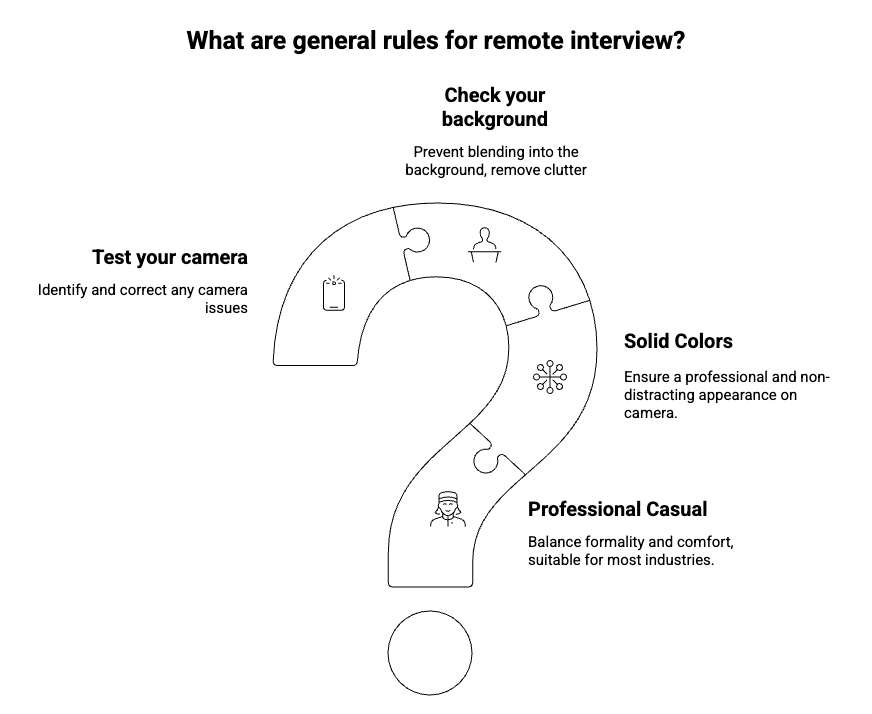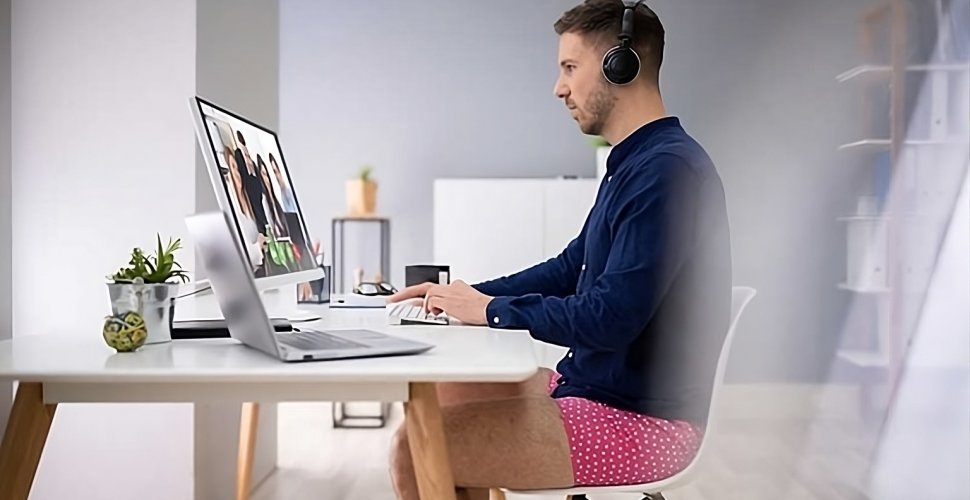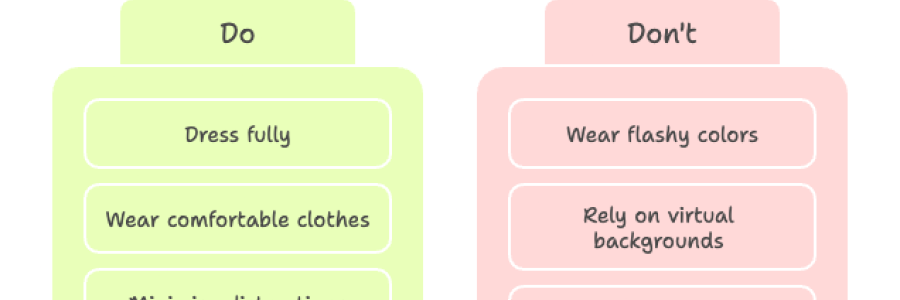First impressions happen on Zoom too
I’ll never forget the time a friend told me about his remote interview disaster. He wore a crisp button-up shirt on top but stayed in pajama pants below. Everything was going smoothly until he dropped his pen, leaned down to grab it, and accidentally pushed his chair back far enough for the camera to catch the whole outfit. Yep—you guessed it. His secret was out.
That story still makes me laugh, but it also reminds me of something important: what to wear during a remote interview really does matter. Even if the camera only shows your top half, your outfit shapes how confident you feel and how professional you look.
So how do you balance looking sharp with staying comfortable when the "office" is your living room? Here's what I've learned.
Why your outfit still matters online
I know some people think remote interviews are more relaxed. You're at home, right? But hiring managers are still forming first impressions in seconds. And since you don't have as much time to build rapport over video, what you wear sends a signal.
I've noticed that clothes affect how I carry myself too. When I put on a button-up shirt, I naturally sit straighter and speak more clearly. When I wear a hoodie, I'm tempted to slouch. It's subtle, but it makes a difference.
My general rules for remote interview attire

1. Aim for polished but not stiff
I go for "professional casual." Not a full suit (unless it's finance or law), but not a faded T-shirt either. A clean blouse, button-down shirt, or a nice knit usually works.
2. Stick to solid colors
I learned the hard way that stripes and busy patterns look weird on camera. They flicker and distract. Solid, muted colors like navy, gray, or soft blue always feel safe and professional.
3. Think about the background
I once wore a white shirt in front of a white wall and basically disappeared. Now I make sure my clothes contrast with my background so I don't blend in or look washed out.
4. Do a camera test
What looks fine in the mirror sometimes looks sheer, shiny, or wrinkled on screen. I always check myself in Zoom before the call. It takes one minute and avoids a lot of stress.
Outfit ideas I've found helpful
For tech or creative roles
I keep it clean but relaxed. A fitted polo, plain T-shirt under a cardigan, or a sweater with dark jeans feels right. Professional, but not stiff.
For corporate or finance interviews
Here, I pull out a blazer. I might not wear a full suit, but a blazer over a crisp shirt signals seriousness. If I'm unsure, I sometimes add a tie—it never hurts to be a little overdressed.
For nonprofit or education jobs
I usually go for softer looks, like a neat blouse with a cardigan. It feels approachable but still professional.
My do's and don'ts

Do:
- Dress fully (not just from the waist up) in case I need to stand.
- Keep jewelry minimal so it doesn't catch the light.
- Wear clothes that feel comfortable, so I'm not fidgeting.
Don't:
- Wear neon or flashy colors that take over the screen.
- Count on virtual backgrounds to cover up a sloppy outfit.
- Assume wrinkles won't show—Zoom catches more detail than you think.
Confidence is the hidden accessory
Honestly, the biggest benefit of dressing well is confidence. I always feel sharper when I know I look put together. One time, I wore my lucky navy blazer for a remote call—it instantly made me feel like I was walking into an actual office instead of just sitting in front of my laptop.
The interviewer couldn't see that confidence as clothing, but they definitely heard it in my voice.
Key takeaways from my experience
- Dress professional casual—polished but still comfortable.
- Solid colors beat patterns on camera.
- Match your look to the industry's culture.
- Always dress fully—you never know.
- Test your outfit on camera before the call.
My final thought
So, what do I wear during a remote interview? I keep it simple: something that makes me look professional, feel comfortable, and come across as confident. The goal isn't to follow a strict dress code—it's to choose clothes that let me focus on the conversation, not my outfit.
Because when the camera turns on, I want my ideas—not my shirt—to take center stage.
Looking for more remote interview tips? Check out my complete guide on How to Nail a Remote Interview for technical setup and interview strategies.
 by
by 
